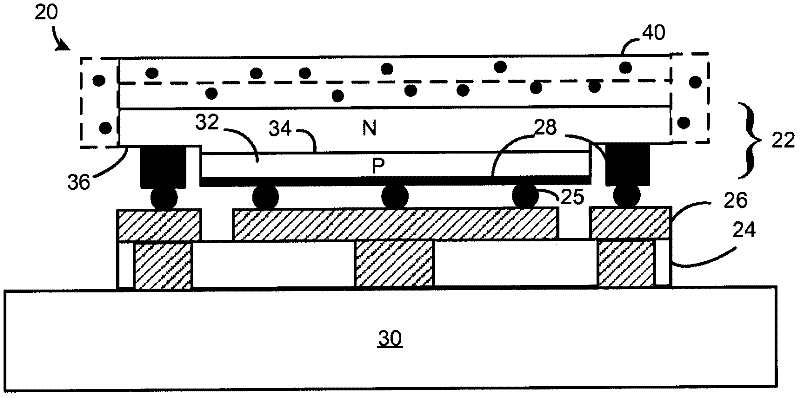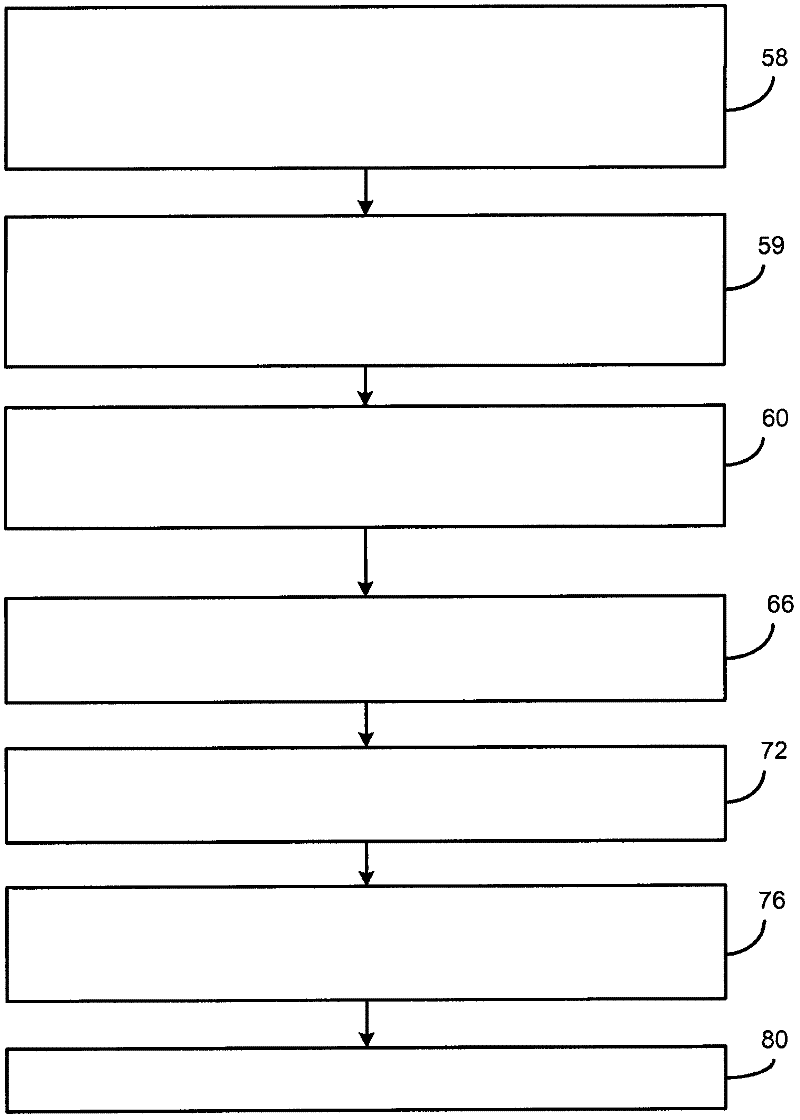Matching led flash to camera's ambient light compensation algorithm
一种环境光、算法的技术,应用在照相机、用于改变发射光的光谱特性的光学元件、光学等方向,能够解决不能精确补偿照明光源等问题
- Summary
- Abstract
- Description
- Claims
- Application Information
AI Technical Summary
Problems solved by technology
Method used
Image
Examples
Embodiment Construction
[0022] Using an LED die and phosphor on the die to create an LED flash for a particular camera that produces white light whose characteristics are customized to substantially match the ambient light settings programmed into the camera Set one. Each camera manufacturer may have its own standard for the type of ambient light (eg, 2500K for incandescent versus 3000K), so the LED flash is customized to substantially match one of the existing ambient light guidelines for cameras.
[0023] The present inventors have performed a test comparing the color error of different color temperatures of ambient light (using a one-color map and the δE94 standard). The inventors have found that when the camera is set to use its incandescent (tungsten) color correction algorithm, the lowest color errors are produced when the LED flash is customized to emit essentially the same color temperature as tungsten (about 2700K). The test also showed that the camera using a standard YAG type LED flash pr...
PUM
 Login to View More
Login to View More Abstract
Description
Claims
Application Information
 Login to View More
Login to View More - R&D
- Intellectual Property
- Life Sciences
- Materials
- Tech Scout
- Unparalleled Data Quality
- Higher Quality Content
- 60% Fewer Hallucinations
Browse by: Latest US Patents, China's latest patents, Technical Efficacy Thesaurus, Application Domain, Technology Topic, Popular Technical Reports.
© 2025 PatSnap. All rights reserved.Legal|Privacy policy|Modern Slavery Act Transparency Statement|Sitemap|About US| Contact US: help@patsnap.com



